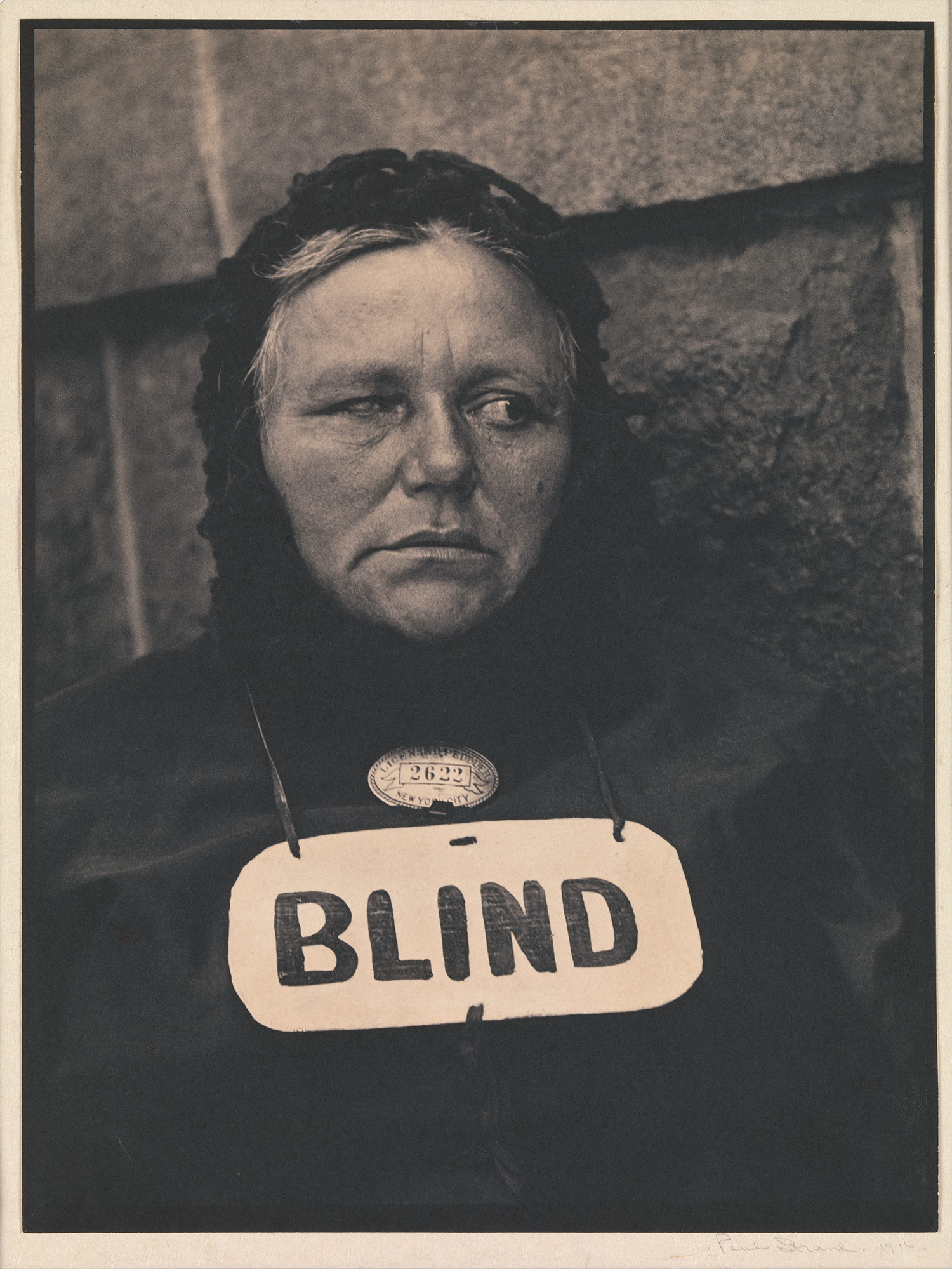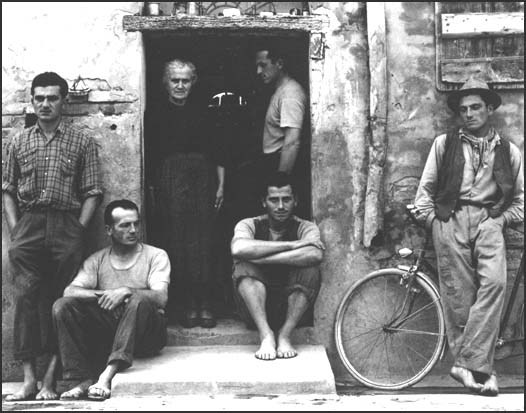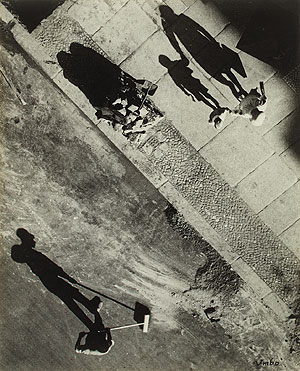"Street photography is a tradition that dates back to the invention of
photography. The invention of photography in the early 20th century
coincided with the urbanisation and globalisation of the world.
Therefore the first photographs ever taken were generally done in the
streets. So the start of photography was the start of street
photography." - Eric Kim
Jacob Riis
Riis, (1849-1914) spent the majority of his work photographing and documenting the lives of poor immigrants in the slums of New York City. He is well known for his book 'How The Other Half Lives' published in 1890. Which documents the tenements of New York. The book was meant to make the upper classes of New York aware of the conditions and show how the poor lived.
I read that the title for his book is a reference from a sentence wrote by french writer Francois Rabelais, who wrote "one half of the world does not know how the other half lives".
 |
| The Tramp 1887 Jacob Riis |
Riis was in and out of poverty and employment, i think this is a big part of why Riis was trying to get people aware of the slums because he had experienced something similar and wanted to help and make a change.
Riis was one of the first American photographer to use flash photography. Ive noticed that in most of Riis' photos his subjects are looking at him, whether he asked them to or if their just looking because their intrigued at what hes doing I'm not sure. But i think it makes his photos more meaningful and adds to the sadness.
 |
| Bandit's Roost by Jacob Riis, New York, 1888 |
Riis had a talent of writing which landed him a job at the local news paper. He eventually worked as a police reporter for the New York Tribune.
Its been said that this photograph was used as inspiration for one of the opening screen shots in the film 'Gangs Of New York'
(But i haven't seen the film so I'm not sure if this is true.)
The dedication Riis shows in his work and him trying to show awareness of the poor is quiet inspiring. I think it pushes you to help more if you've experienced something similar or the same as the person your trying to help. It gives you motivation to try change and make something better.
Overall i think that Riis is a really good photographer, his images capture your attention and make you ask questions. Each one tells its own story and are intriguing to look at.
Eugene Atget
Atget, (1857-1927) was a french photographer who documented all the architecture and street scenes of Paris. He ignored the new, modern buildings set out to capture the character and details of the mature streets.
He tried painting and acting but choose photography as his profession and supported himself by selling his work to painters as studies.
 Atget referred to his work as documents instead of photographs or images, he seems like a secluded photographer his work is quiet and there's not a lot happening in them. It looks like hes the only person at the locations hes capturing. There very eerie, bizarre in a way. Why aren't there any people there?
Atget referred to his work as documents instead of photographs or images, he seems like a secluded photographer his work is quiet and there's not a lot happening in them. It looks like hes the only person at the locations hes capturing. There very eerie, bizarre in a way. Why aren't there any people there?
Atget's style is
interesting, he captured the old and not the new. Usually when you hear
that something new and big has been built you would want to go and
photograph it but he ignored new things its quite strange.
I wonder if he had to wait in the streets then capture them when there wasn't anyone around...
 Ive
also seen that Strand has many ranges of subjects from portraits to
landscapes, abstractions and machinery. To me Strands work of portraits
and his abstractions are the strongest, his portraits show emotion and
character the contrast within his images are really strong. His
abstractions look to be around the theme of shadows and lines which i
find is a common thing for photographers to take an interest in.
Ive
also seen that Strand has many ranges of subjects from portraits to
landscapes, abstractions and machinery. To me Strands work of portraits
and his abstractions are the strongest, his portraits show emotion and
character the contrast within his images are really strong. His
abstractions look to be around the theme of shadows and lines which i
find is a common thing for photographers to take an interest in.
Paul Strand
Strand (1890-1976) is an American photographer who's main focus was different cultures and people.
 |
| Paul Strand The Family, Luzzara, Italy 1953 |
 | ||||||||
| Paul Strand Wall Street 1915 |
From the work
I've seen of Strands, he has two sort of themes if you will. One being
very abstract and natural the other being more formal in a way. Ive
picked these two images of Strands because i thought they best showed
the themes. You can see in 'Wall Street' that this image is more
abstract and quite natural. With the building and people to the shadows
and composition. I think the contrast is a big part of this image, it
brings everything together. You can see the detail on the building and
even some on the people. I think its a really interesting image. Then
with 'The Family' its more formal not because of their clothes you can
see their poor, i guess its because of there stances and attitudes
maybe. I don't know maybe I'm using the wrong word to describe this. Its
just you can see that this image is very different from 'Wall Street'.
Its quite sad actually, obviously their a family the mother and her
sons. But they don't look very close or happy, they seem like they have
better things to do then take a family photo. Their facial expressions
are quite grim they have on connection with each other like they have no
interest with one another. I do still like the image, i still find it
interesting it makes you ask questions and think, its just intriguing
because its different and quite unusual.
Paul Strand - "Look at the things around you, the immediate world around you. If you
are alive, it will mean something to you, and if you care enough about
photography, and if you know how to use it, you will want to photograph
that meaningness. If you let other people's vision get between the world
and your own, you will achieve that extremely common and worthless
thing, a pictorial photograph".
 Ive
also seen that Strand has many ranges of subjects from portraits to
landscapes, abstractions and machinery. To me Strands work of portraits
and his abstractions are the strongest, his portraits show emotion and
character the contrast within his images are really strong. His
abstractions look to be around the theme of shadows and lines which i
find is a common thing for photographers to take an interest in.
Ive
also seen that Strand has many ranges of subjects from portraits to
landscapes, abstractions and machinery. To me Strands work of portraits
and his abstractions are the strongest, his portraits show emotion and
character the contrast within his images are really strong. His
abstractions look to be around the theme of shadows and lines which i
find is a common thing for photographers to take an interest in.
Strand also took an interest in film making, he and Charles Sheeler created a short film Manhatta in 1921 which looks to document the city life. The movement of people, water, boats and other things.
Umbo
Umbo/
Otto Umberhr (1902-1980) was a German photographer. Throughout the
1930s and early 1940s, Umbo worked as a freelance photojournalist,
travelling to North Africa and Italy on assignments.
 |
| Umbo [Mystery of the Street] 1928 |
Umbo looks at photography in a different perspective, he uses unusual camera angles. Like Strand, Umbo works with shadows. In
these images the shadows seem more real then just a shape on the ground
for me there the first thing i notice when i look at these images even
though there just silhouettes they have so much detail and stand out
from everything else. I like Umbo's creativity with his work, hes
defiantly one of the photographers i like from this project.


After documenting the Great Depression Evans turned his attention to the subway in New York City capturing shots of subway riders. He tried hiding his camera in his jacket but in some of his images you can see some of the subjects are looking directly at the camera. Its quite humorous actually, Evans basically snuck a camera on a train and took pictures of people with out them knowing resulting in him capturing real, everyday pictures.



I find this image interesting, there's so many different characters at different ages but there all brought together by the hats and fur which creates a relationship you could say with each subject.
In 1966 Evans published the book Many Are Called, collaborating with James Agee which documents his work on the subway. Agee wrote the introduction for Evans book and wrote,
Those who use the New York subways are several millions…They are members of every race and nation of the earth. They are of all ages, of all temperaments, of all classes, of almost every imaginable occupation. Each is incorporate in such an intense and various concentration of human beings as the world has never known before. Each, also, is an individual existence, as matchless as a thumbprint or a snowflake. Each wears garments which of themselves are exquisitely subtle uniforms and badges of their being. Each carries in the postures of his body, in his hands, in his face, in the eyes, the signatures of a time and a place in the world upon a creature for whom the name immortal soul is one mild and vulgar metaphor.
Again like Riis' work i think Evans images are intriguing to look at, they show history and character, show narrative and are appealing to the eye.
Walker Evans
Evans (1903-1975) is an American Photographer, who inspired many Street Photographers such as Lee Friedlander, Diane Arbus and Robert Frank. Evans is most famous for his work for the Farm Security Administration, documenting the effects of the Great Depression.

After documenting the Great Depression Evans turned his attention to the subway in New York City capturing shots of subway riders. He tried hiding his camera in his jacket but in some of his images you can see some of the subjects are looking directly at the camera. Its quite humorous actually, Evans basically snuck a camera on a train and took pictures of people with out them knowing resulting in him capturing real, everyday pictures.



I find this image interesting, there's so many different characters at different ages but there all brought together by the hats and fur which creates a relationship you could say with each subject.
In 1966 Evans published the book Many Are Called, collaborating with James Agee which documents his work on the subway. Agee wrote the introduction for Evans book and wrote,
Those who use the New York subways are several millions…They are members of every race and nation of the earth. They are of all ages, of all temperaments, of all classes, of almost every imaginable occupation. Each is incorporate in such an intense and various concentration of human beings as the world has never known before. Each, also, is an individual existence, as matchless as a thumbprint or a snowflake. Each wears garments which of themselves are exquisitely subtle uniforms and badges of their being. Each carries in the postures of his body, in his hands, in his face, in the eyes, the signatures of a time and a place in the world upon a creature for whom the name immortal soul is one mild and vulgar metaphor.
Again like Riis' work i think Evans images are intriguing to look at, they show history and character, show narrative and are appealing to the eye.


No comments:
Post a Comment